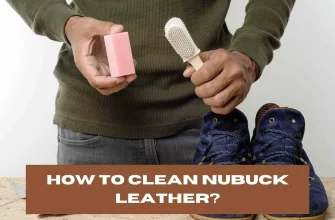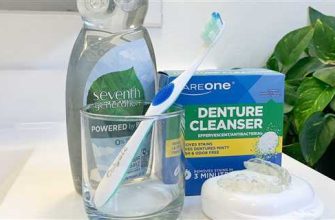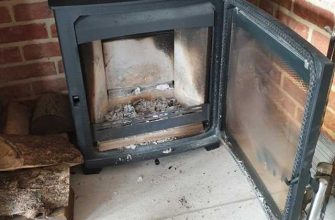
If you’re considering getting a septum piercing, it’s important to know what to expect during and after the process. Septum piercings have become increasingly popular in recent months, with many people opting for this unique and stylish piercing. However, it’s possible that you may experience some pain and irritation during the healing period, so it’s essential to properly care for your new piercing.
Before you get your septum pierced, make sure you find a reputable piercer who knows what they’re doing. You want to ensure that they use clean and sterile equipment and that they have experience with septum piercings specifically. It may seem like a little thing, but choosing the right piercer can make a big difference in your overall experience.
Once your septum piercing is done, caring for it properly is crucial. Cleanliness is key, so make sure you clean your piercing every day. You can use a saline solution or a mixture of warm water and sea salt for cleaning. Avoid using soap or other harsh chemicals, as they can cause irritation. Use a clean, microwave-safe cup or shot glass to create your saline solution, and gently soak your piercing in it for a few minutes each day.
During the healing process, it’s essential to be careful not to accidentally snag your septum piercing on clothing or other objects. Avoid flipping the jewelry up and down too much, as it can cause pain and irritation. If you’re having trouble with the healing process or experience any signs of infection, it’s best to consult with a professional piercer or medical professional for guidance.
After a few months, your septum piercing should be fully healed. At this point, you can start experimenting with different types of jewelry, including rings and other unique accessories. However, it’s important to continue practicing proper aftercare to ensure the longevity and health of your septum piercing.
In conclusion, getting a septum piercing is a decision that should be made after careful consideration and research. It’s important to know what to expect during the piercing process, as well as how to properly care for your new piercing afterward. By following these guidelines and practicing good aftercare, you can enjoy a healthy and stylish septum piercing for years to come.
- What Not to Use – How to Make Your Own Saline Soak
- What Not to Use
- How to Make Your Own Saline Soak
- Help – How to Clean a Septum Piercing
- 1. Aftercare Instructions
- 2. Wash Your Hands
- 3. Saline Solution
- 4. Cleaning Process
- 5. Cleaning Frequency
- 6. Avoid Harsh Products
- 7. Avoid Touching
- 8. Be Mindful of Your Lifestyle
- 9. Consult a Professional
- 10. Jewelry Options
- 11. Properly Flip Up or Down
- 12. Discard Irritation-causing Cleaning Methods
- How To Clean Your Septum Piercing During the Healing Process and Beyond
- Septum Jewelry Options – Healing – Cleaning
- Jewelry Options
- Healing Process
- Cleaning Instructions
- Tips for Cleaning
- Things You Should Not Do When Caring for Your Septum Piercing
- How to Use Your Saline Soak
- Step 1: Prepare Your Saline Solution
- Step 2: Clean Your Hands
- Step 3: Soak a Cotton Ball or Gauze Pad
- Step 4: Apply the Soaked Cotton Ball or Gauze Pad
- Step 5: Pat Dry
- Step 6: Repeat the Process
- Additional Tips
- Cleanliness Affects Septum Piercing Healing Time
- 1. Reduce the risk of infection
- 2. Speed up the healing process
- 3. Avoid complications
- How to clean your septum piercing:
- Video:
- REPIERCING MY SEPTUM‼️ (gone wrong)
What Not to Use – How to Make Your Own Saline Soak
During the healing process of your septum piercing, there are several things that you should avoid using. It’s important to note that only saline solution or specifically made saline soaks should be used to clean your piercing. Here’s what you should not use and how to make your own saline soak.
What Not to Use

- Tap Water: Using tap water to clean your piercing is not recommended because it may contain harmful bacteria or minerals that can irritate your piercing.
- Soap or Cleansers: Avoid using soap or cleansers on your piercing as they can be too harsh and cause irritation or dryness.
- Alcohol or Hydrogen Peroxide: These solutions can be too strong and may delay the healing process of your piercing.
- Baking Soda or Salt Water: While baking soda or salt water may seem like natural options, they can disrupt the balance of your piercing and cause further irritation.
How to Make Your Own Saline Soak
Making your own saline soak is easy and affordable. Here’s a simple recipe to create your own saline solution:
- Boil a pint (about half a liter) of water. Distilled or filtered water is preferred to reduce the risk of impurities.
- Dissolve 1/4 teaspoon of non-iodized salt into the boiled water. Make sure to use salt without iodine, as iodine can irritate your piercing.
- Let the solution cool down to a comfortably warm temperature. You don’t want it to be too hot or too cold.
- Pour the saline solution into a clean, microwave-safe container. You can also use a glass or plastic bottle with a secure lid.
- Before using the saline soak, make sure to clean your hands thoroughly with soap and warm water.
- Gently soak a clean cotton ball or gauze pad in the saline solution.
- Apply the soaked cotton ball or gauze pad to your septum piercing, making sure to cover the entire area.
- Leave the saline soak on your piercing for a few minutes to allow the solution to work.
- Afterward, gently pat your piercing dry with a clean towel or let it air dry.
- Remember to repeat this process at least twice a day, preferably in the morning and before going to bed.
By following these steps, you can ensure that your septum piercing stays clean and healthy throughout the healing process. If you experience any signs of infection or unusual pain, it’s important to consult with a doctor or your piercer for further guidance.
Help – How to Clean a Septum Piercing
When you first get a septum piercing, it’s important to remember that it’s a wound and needs proper care to heal. One of the most crucial steps is keeping it clean. Here’s a guide on how to clean a septum piercing:
1. Aftercare Instructions
After getting your septum pierced, the piercer will give you aftercare instructions. Make sure to follow them carefully as they are specific to your piercing. They will give you information on how often to clean your piercing and what products to use.
2. Wash Your Hands
Before touching or cleaning your septum piercing, always wash your hands thoroughly with warm water and soap. This will help prevent any bacteria or germs from entering the piercing and causing infection.
3. Saline Solution
One of the best ways to clean a septum piercing is by using saline solution. Saline solution is a mixture of salt and water and helps keep the piercing clean without causing irritation. You can either make your own saline solution or buy it pre-made from a store.
4. Cleaning Process
To clean your septum piercing, follow these steps:
- Start by soaking a cotton ball or pad in the saline solution.
- Gently clean the area around the piercing, making sure to remove any crust or discharge.
- Be careful not to rotate the jewelry or move it around too much, as it can cause irritation.
- If there is any stubborn residue, you can use a q-tip soaked in saline solution to gently clean it.
- After cleaning, pat the area dry with a clean towel or let it air dry. Avoid using tissues or paper towels, as they may leave fibers on the piercing.
5. Cleaning Frequency
During the healing process, you should clean your septum piercing twice a day. After it has fully healed, you can reduce the frequency to once a day or as needed.
6. Avoid Harsh Products
When cleaning your septum piercing, avoid using harsh products such as alcohol, hydrogen peroxide, or antibacterial creams. They can dry out the skin and delay the healing process.
7. Avoid Touching
While the piercing is healing, try to avoid touching it with dirty hands or unnecessarily. This will help prevent infection and irritation.
8. Be Mindful of Your Lifestyle
Keep in mind that certain activities, such as swimming in pools or hot tubs, can introduce bacteria into your piercing. It’s best to avoid these activities until your septum piercing has fully healed.
9. Consult a Professional
If you experience any severe pain, prolonged redness, swelling, or discharge, it’s important to consult a professional piercer or a doctor. They can provide you with guidance and ensure that your piercing is healing properly.
10. Jewelry Options
If you want to change your jewelry, make sure to wait until your septum piercing has completely healed. This can take anywhere from 6 to 12 months. Once healed, you can choose from various jewelry options, including rings, horseshoe barbells, or clickers.
11. Properly Flip Up or Down
If you need to hide your septum piercing for work or other reasons, make sure you practice flipping it up or down before doing so. This way, you’ll know how to do it properly and without causing any pain or irritation.
12. Discard Irritation-causing Cleaning Methods
If you notice that a certain cleaning method is causing irritation or discomfort, stop using it immediately. Everyone’s body is different, and what works for some may not work for others. It’s essential to find a cleaning method that suits your specific needs.
Remember, taking care of your septum piercing is a learning process. Be patient and give it the time it needs to heal.
How To Clean Your Septum Piercing During the Healing Process and Beyond
When getting a septum piercing, it’s important to know how to properly care for it during the healing process and beyond. Regular cleanings are crucial to prevent infection and help the piercing heal properly. Here are three steps to keep in mind:
- Prepare a saline solution: Before starting the cleaning process, you’ll need to make a saline solution. Mix 1/4 teaspoon of non-iodized salt with 8 ounces of warm distilled water. It’s best to use a microwave-safe container to heat the water.
- Clean the piercing: To clean your septum piercing, follow these steps:
- Wash your hands: Always wash your hands thoroughly before touching your piercing.
- Soak a cotton swab or cotton ball: Dip a cotton swab or cotton ball into the saline solution you prepared.
- Gently clean the area: Using the soaked cotton swab or cotton ball, gently clean the area around the piercing. Be careful not to pull on the jewelry or move it around too much.
- Rinse with water (optional): You can rinse the area with warm water after cleaning if desired, but it’s not necessary.
- Perform cleanings regularly: During the healing process, you’ll want to clean your septum piercing at least two to three times a day. After the piercing is fully healed, you can decrease the frequency to once a day or every other day. Regular cleanings help prevent infection and keep the piercing clean.
It’s important to note that using harsh chemicals or overcleaning can irritate the piercing and prolong the healing process. Stick to the saline solution for cleaning and avoid using alcohol, peroxide, or any other harsh substances.
To make the cleaning process easier, here are a few tips:
- Use a clean container: Make sure the container you use to prepare the saline solution is clean and free of any residue.
- Make enough solution: Prepare enough saline solution to last for a few days. You can store it in a clean, airtight container.
- Warm the solution before use: Before cleaning, warm the saline solution to a comfortable temperature. A few seconds in the microwave should do the trick.
- Be gentle: When cleaning the piercing, be gentle and avoid any unnecessary pulling or twisting of the jewelry. This can cause irritation and pain.
Throughout the healing process and beyond, always keep an eye out for any signs of infection. If you notice excessive swelling, redness, pus, or increasing pain, it’s best to consult a doctor for further information and guidance.
Remember, cleaning your septum piercing is an important part of the healing process. By following these steps and keeping the piercing clean, you can help ensure proper healing and avoid complications.
Septum Jewelry Options – Healing – Cleaning
Jewelry Options
When it comes to septum piercings, there are various jewelry options to choose from:
- Rings: Circular and horseshoe rings are common choices for septum piercings. They come in different sizes, materials, and designs.
- Retainers: These are typically made from clear or flesh-colored materials and are less noticeable.
- Captive Bead Rings: These consist of a ring with a bead or ball that “captures” the ring in place.
Healing Process
Healing time for a septum piercing can vary, but it usually takes around 6-8 weeks for initial healing to occur. However, it may take several months for the piercing to completely heal. During this time, it’s important to follow proper aftercare to avoid complications.
Cleaning Instructions
To ensure a successful healing process and prevent infection, follow these cleaning instructions for your septum piercing:
- Wash your hands thoroughly with antibacterial soap before touching your piercing.
- Soak a clean cotton pad or gauze in a saline solution made with a teaspoon of non-iodized salt and a cup of warm water.
- Gently clean around the piercing area, removing any crust or discharge.
- Do not use alcohol, hydrogen peroxide, or harsh cleaning solutions on your piercing, as they can irritate the skin and delay healing.
- Repeat this cleaning process 2-3 times a day.
Tips for Cleaning
Here are some additional tips to make the cleaning process easier:
- Use a microwave-safe glass or a shot glass to create the saline solution.
- To clean the inner part of the piercing, you can use a cotton swab soaked in the saline solution.
- After cleaning, gently pat the area dry with a clean paper towel or tissue. Avoid using towels or fabrics that may harbor bacteria.
- Avoid using soap or cleansers directly on the piercing, as they can dry out the skin.
Remember, proper cleaning and care is essential to prevent infections and promote healing for your septum piercing.
Things You Should Not Do When Caring for Your Septum Piercing
While taking care of your septum piercing is straightforward and relatively easy, there are a few things you should avoid doing to ensure proper healing and minimize the risk of infection. Here are some important things to keep in mind:
- Do not touch your piercing with dirty hands: Before touching your septum piercing, always make sure your hands are clean. Dirty hands can introduce bacteria and increase the risk of infection.
- Do not use harsh cleaning products or solutions: When cleaning your septum piercing, avoid using harsh chemicals or products that are not specifically recommended for piercings. Stick to gentle saline solution or mild soap as directed by your piercer.
- Do not over-clean or under-clean: It is important to find the right balance when cleaning your septum piercing. Over-cleaning can irritate the piercing, while under-cleaning can lead to infection. Follow your piercer’s guidelines on how often to clean your piercing.
- Do not use towels or fabrics that may irritate the piercing: When drying your septum piercing, use a clean, disposable paper towel or a soft, clean cloth. Avoid using towels or fabrics that may cause irritation or snag on the jewelry.
- Do not submerge your piercing in water: Avoid fully submerging your septum piercing in water, especially during the healing process. Water can introduce bacteria and prolong the healing time.
- Do not remove or change your jewelry too soon: It is important to wait until your septum piercing is fully healed before attempting to remove or change the jewelry. Prematurely removing or changing the jewelry can cause complications and prolong the healing process.
- Do not perform unnecessary movements with your jewelry: Refrain from flipping or moving the jewelry unnecessarily. This can cause irritation, prolong the healing time, and increase the risk of infection.
- Do not use baking soda solutions: While baking soda may seem like a natural cleansing agent, it can disrupt the pH balance of the healing piercing and potentially cause irritation or infection.
- Do not microwave saline solution: Microwaving saline solution may seem like a convenient way to warm it up, but it can actually affect the solution’s cleanliness and increase the risk of infection. Stick to using room temperature or pre-heated saline solution.
- Do not ignore signs of infection or other issues: Be vigilant about any signs of infection, such as excessive pain, redness, swelling, or discharge. If you notice any of these signs or other unusual symptoms, seek professional help from your piercer or a healthcare provider.
By avoiding these things and following proper aftercare guidelines, you can help ensure a smooth healing process and enjoy your septum piercing for years to come.
How to Use Your Saline Soak
Using a saline soak is an important part of the aftercare routine for your septum piercing. This solution helps to clean and heal the piercing, reducing the risk of infection and promoting proper healing. Here’s a step-by-step guide on how to use your saline soak:
Step 1: Prepare Your Saline Solution
To make your saline solution, you’ll need to mix a teaspoon of non-iodized sea salt with a gallon of distilled water. You can also use saline wound wash, which is available at most drugstores. Make sure the water you use is clean and doesn’t contain any impurities.
Step 2: Clean Your Hands
Before touching your piercing or the saline solution, thoroughly wash your hands with antibacterial soap. This helps to prevent any bacteria from transferring to your piercing and causing infection.
Step 3: Soak a Cotton Ball or Gauze Pad

Take a cotton ball or gauze pad and dip it into the saline solution until it’s fully saturated. Make sure the cotton ball or gauze pad is clean and doesn’t have any loose threads or fibers that could snag on your piercing.
Step 4: Apply the Soaked Cotton Ball or Gauze Pad
Gently press the soaked cotton ball or gauze pad against your piercing. Hold it in place for a few minutes, allowing the saline solution to fully soak into the piercing. You can also gently flip the septum piercing to ensure that the solution reaches all areas of the piercing.
Step 5: Pat Dry
After the soak, use a clean towel to gently pat your piercing dry. Avoid rubbing or pulling at the piercing, as this can irritate the area and delay the healing process.
Step 6: Repeat the Process
You should perform the saline soak at least two to three times a day during the healing process. However, if your piercing is fully healed, you can reduce the frequency to once a day or as needed.
Additional Tips
- Always make a fresh batch of saline solution each time you perform a soak.
- Do not use tap water for the saline solution, as it can contain harmful bacteria and minerals that could affect your piercing.
- If you’re unsure about the placement or healing of your septum piercing, consult with your piercer for guidance.
- If you notice any signs of infection, such as excessive redness, swelling, or pus-like discharge, seek medical attention as soon as possible.
- Avoid touching your piercing with unwashed hands or allowing others to touch it, as this can introduce bacteria and increase the risk of infection.
- Wear clothing that won’t snag on your piercing, such as loose-fitting shirts and avoid sleeping on your stomach or with your face pressed against a pillow.
- If you need to clean your piercing while you’re away from home, you can use saline wound wash in a spray bottle for convenience.
Following these steps and taking proper care of your septum piercing will help ensure a smooth healing process and reduce the risk of complications. If you have any concerns or questions about your aftercare routine, don’t hesitate to reach out to your piercer for guidance.
Cleanliness Affects Septum Piercing Healing Time
Cleanliness is crucial when it comes to septum piercing healing time. Keeping the piercing clean can help prevent infections and promote faster healing. Below are some reasons why cleanliness is important and tips on how to properly clean your septum piercing.
1. Reduce the risk of infection

When you get a new piercing, it is normal for the area to be more prone to infections. The piercing process creates a small wound, making it easier for bacteria to enter the tissue. By keeping your septum piercing clean, you can minimize the risk of infection.
2. Speed up the healing process
Cleanliness plays a significant role in how quickly your septum piercing heals. Proper cleaning can help remove any crust or discharge that may accumulate around the pierced area. This allows the tissue to heal properly and promotes faster healing times.
3. Avoid complications
Cleanliness can help prevent complications that may arise during the healing process. If the piercing becomes infected or irritated, it can lead to issues such as scarring, prolonged healing times, or the need to remove the piercing altogether. By properly cleaning your septum piercing, you can avoid these potential problems.
How to clean your septum piercing:
- Start by thoroughly washing your hands with warm water and antibacterial soap.
- Using a clean cotton ball or gauze pad, soak it in a saline solution. You can make this solution by mixing 1/4 teaspoon of non-iodized salt with 1 cup of distilled water.
- Gently clean the area around your septum piercing, using the soaked cotton ball or gauze pad. Avoid twisting or moving the jewelry while cleaning.
- Rinse the piercing with water to remove any residue or salt solution.
- Pat the area dry with a clean towel or let it air dry.
- Repeat this cleaning process at least twice a day or as recommended by your piercer.
Remember, cleanliness is a crucial factor in the healing process of your septum piercing. By following proper cleaning techniques and maintaining good hygiene throughout the healing period, you can ensure that your piercing heals successfully and avoid any unnecessary complications.








